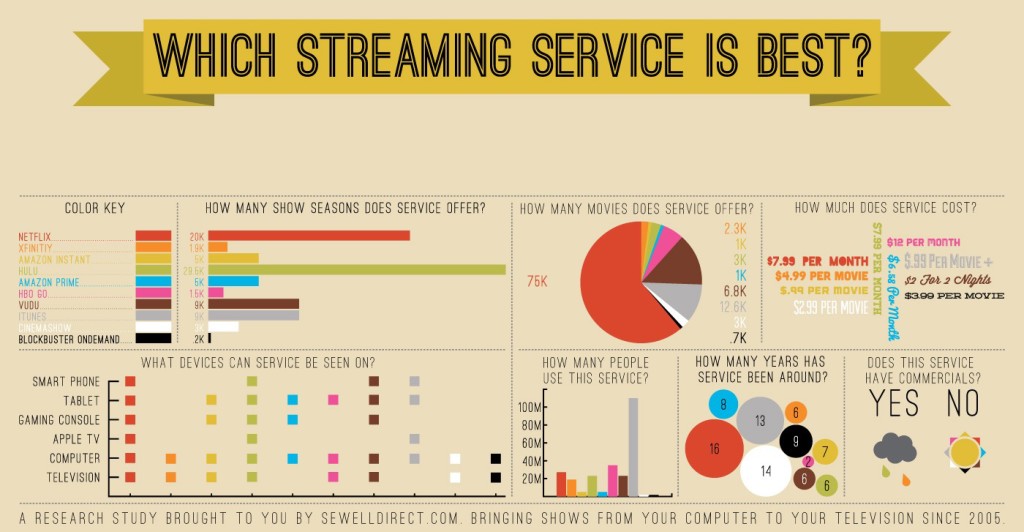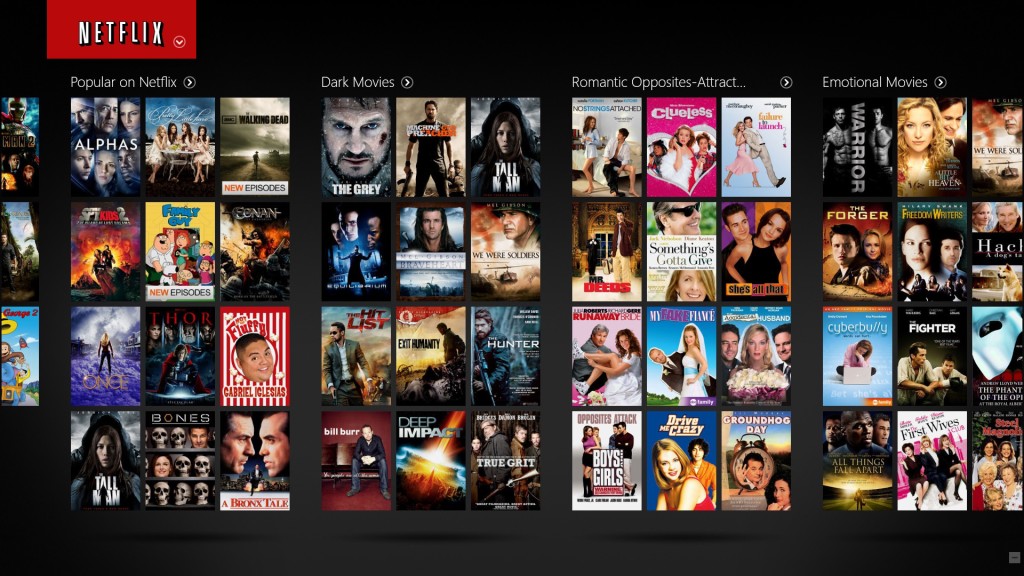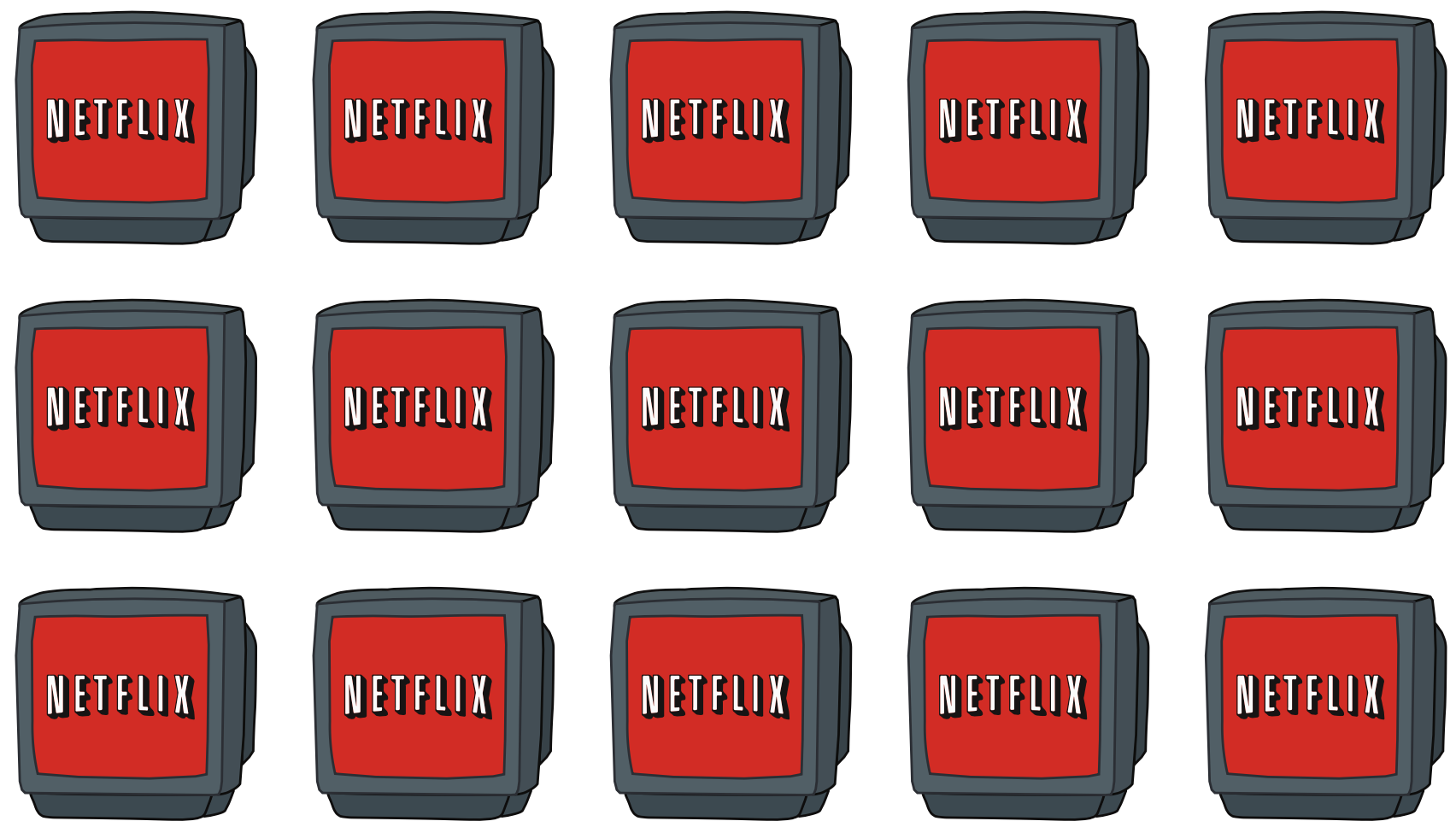The rise of the Netflix giant
How video-on-demand services challenge the status quo
Video streaming services such as Netflix, Hulu, and Shomi are becoming increasingly popular. In 2014, TIME magazine conducted a study that found 40 per cent of American households now subscribe to some sort of monthly streaming service. A staggering number of households are dropping cable TV subscriptions all together in favour of watching television solely via the Internet. There are many reasons for the rise in popularity of these types of services. The most obvious would be the instant gratification of watching any show you want at any time, coupled with the lack of commercials or interruptions typically found when watching cable TV. Video on demand services challenge how we as consumers think about our entertainment. Gone are the days of renting newly released movies from Blockbuster, or paying obscene monthly fees for hundreds of channels just to watch a couple of your favourite shows.
This shift in how we consume media has not only affected television. The Hollywood Reporter published findings stating that less people went to the movies in 2014 than in any other year since 1995. In an age of instant entertainment, it is getting harder to justify the price of a movie ticket when you can select something to watch from a catalogue of hundreds of films instantly, without ever having to leave the comfort of your home. More recently, services such as Netflix have even started producing and distributing their own films. This year the acclaimed Beasts of No Nation was released straight to Netflix. Viewers were able to watch it the minute it was released, as long as they had a subscription. This particular model terrifies Hollywood studios, because if more films were released this way, it would completely eliminate any reason to go to the theatre for most people. So what are the entertainment giants of Hollywood and network television doing to combat this newfound threat of video-on-demand?

As far as television goes, we see most major networks adapting to the rise of streaming services. It is understandable that if they do not evolve to meet the needs of the new mode of consumption, they will quickly go extinct. New services like HBO Go, Rogers On-Demand, and CTV Go serve as supplements to the network counterpart of each respective station, allowing users to watch their favourite shows instantly online. Other major networks, such as AMC, have gone even further, publishing their major releases straight to Netflix.
With Hollywood, there is less of a definitive response. However, a business model that involves films being released directly to video-on-demand is a very real threat to the movie theatre industry, which is where most profits for studio films come from. Historically, competition to the standard Hollywood model has been healthy and productive for the world of film, leading to both great innovations and great movies. In the 1950s, when the popularity of affordable consumer televisions caused a dramatic decline in movie going, studios invested in new technology to draw audiences out of their homes and away from their new devices. One of the biggest contributors to reinvigorating theatre experience was the advent of various widescreen technologies. Today, widescreen is still the standard, and typically much preferred to the old days of 4:3 aspect ratios.
In the late 1960s and early 1970s, theatre attendance saw another decline, this time much more substantial. Due to extremely low profits, big studios were forced to innovate for fear of going out of business. Hollywood studios breathed new life into their films by giving young, up-and-coming directors more creative control over their projects. This led to the time known as ‘New Hollywood’. This era produced many classic American films such as Taxi Driver, The Godfather, Bonnie and Clyde, Chinatown, Network, Nashville, and The French Connection.

So what does this have to do with today? Well, it’s my belief that if video-on-demand streaming continues to grow at this rate, we may see Hollywood studios react in some new, interesting ways. We already see gimmicky attempts at getting people out of their homes to watch movies, with technology such as 3D and Ultra AVX D-Box. If more acclaimed films begin to be released straight to streaming services, these theme park-esque frills won’t be enough to keep attendance numbers up. As it stands, online streaming is a threat. However, while 2014 saw a decline in theatre attendance, 2015 was the most profitable box office year ever, with cash giants such as Jurassic World, Avengers: Age of Ultron, and of course Star Wars: The Force Awakens. While this success signals a hope at renewing theatre attendance, the fact that the critically acclaimed Netflix film, Beasts of No Nation, was completely ignored by the Academy signals trouble in paradise. I can infer that this model is not something Hollywood is happy about, nor is it something they will endorse. We’ll just have to keep watching to see how these competing mediums will push each other to greater creativity.
